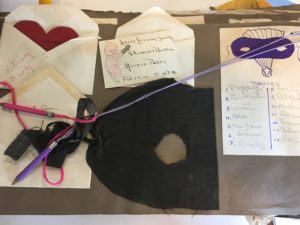In this 2018 podcast, Rethinking and Remembering: The 1898 Wilmington, NC Massacre and Coup, I talk with Ed O’Donnell about my book, Race, Place, and Memory: Deep Currents in Wilmington, NC. In the 1990s, I was involved in a public history initiative to commemorate the centennial of the massacre and coup. As O’Donnell says, my work “stirred a lot of controversy because it challenged the convenient cover story for what happened in November 1898 by demonstrating that it was a naked and calculated act of white supremacist political violence.That experience prompted Mulrooney to write Race, Place, and Memory to examine the long sweep of the city’s history to reveal many incidents of white supremacist violence, both before and after 1898, that were either forgotten or misremembered. It’s both a history of a representative southern city and a consideration of the role of public history in fostering an accurate vision of the past and insights into the challenges facing American society in the present.”
Author Archives: Meg
Notes on Leadership
What kind of leader are you? I recently chaired a search committee for an administrative position and it was one of the things we asked candidates—for obvious reasons. Really, what committees want to know with this question is, How will you motivate people, manage them, get them to do stuff? Nearly every candidate used the word ‘collaborative.’ I hear that word used so often these days, thrown around in meetings and casual conversation, that it has become a cliché. So I set out to do a little reading on leadership styles to see where ‘collaborative’ came from, what it meant, and what it meant for me as a leader, if anything.
What’s in a Name? The JMU Quad as a Lesson Plan
I’m republishing this August 2019 post today 6/20/20 with a disclaimer: it contains references to historic ideas, words, and images that today are considered racist. I temporarily removed it because petitions linking to it were circulating on mass media and social media, and portions of it were taken out of context.
If you understand that a college campus is a commemorative landscape, that its named buildings, statuary, roadways, plazas, and so forth all comprise a text that can be read for insights into the institution’s cultural values, then you’ll appreciate it when I say that JMU’s Quad is a kind of lesson plan. Conceived by Dr. John Wayland, first professor of history at the State Normal and Industrial School for Women at Harrisonburg and head of the department of Social Studies until 1931, the plan relies on the associative properties of monuments, which call forth the great deeds and virtues of the person or Continue reading
Selling Gen Z on GenEd
Every year, JMU’s more than 80 First Year Advisors have a full day of professional development to prepare for the summer registration of more than 4600 freshmen. This year, I offered some updates about the General Education program followed by these remarks:
I’m often asked by advisors, “How can we talk about the value of JMU’s General Education program in a way that seems persuasive and authentic for this population, Generation Z, at this moment in time?” Yesterday’s IHE featured an op-ed by Roger Continue reading
Searching for Mr. Walker Lee
His name leaps out at me. “In Science Hall there was Walker Lee, the janitor. Short, rotund, and coal black, Walker’s smile, cheerful disposition and willingness to be of help made him a favorite with the girls. He could out spell many of them and was said to write a finer hand than President Burruss himself.” These sentences appear in Chapter 5 of Raymond C. Dingledine, Jr.’s Madison College (1958), a celebratory review of this institution’s first fifty years. Although the name is right there in black and white, the customary honorific “Mr.” is missing. Following the customs of the day, Dingledine, the Continue reading
Confronting Blackface
I’m republishing this Feb. 2019 post today 6/20/20 with a disclaimer: it contains references to historic ideas, words, and images that today are considered racist. I temporarily removed it because links to it were circulating on mass media and social media, and portions of it were taken out of context.
Blackface minstrelsy has a long history on this campus, so in light of recent revelations about state officials’ participation in related activities I thought I’d pull together some information for students wondering what the heck is going on. First, as Dr. Rhae Lynn Barnes noted in her recent WaPo essay, “The Troubling History Behind Ralph Northam’s Blackface Klan Photo,” minstrelsy was absolutely “central to civic and campus life in 20th century America.” White men, young and old, poor and elite, uneducated and erudite, not only used “the profits of amateur blackface to build white-only institutions” but, more importantly, to affirm their political, economic, and cultural Continue reading
Alumni Scrapbooks and Collective Memory
Collegiate scrapbooks are no longer a thing. Sure, modern students still take photographs to document their college years—arguably, they take even more than my generation, thanks to digital cameras–but instead of pasting images into memory books, they post them to Snapchat, Instagram, and Facebook. It’s interesting to compare the ephemerality of today’s memory-keeping activities to the materiality of yesterday’s.
Physical scrapbooks fascinate me. I’m a scrapbooker, myself, have been since middle Continue reading
Summer’s Never Off
If one more person says to me, “So, enjoying your summer off?,” I’m gonna scream. True, the number of classes in session is fewer, the number of students on campus has dropped, and the number of meetings has dwindled. Yet June and July are busy months for those of us who oversee general education programs at public universities.
 Our unit, University Programs, manages the enrollment of all first year students–at present, we expect more than 4,600 freshmen and about 650 transfers (we use the term Firstyears for both populations). That many bodies requires a lot of seats! In the past, we assumed an average of 4.2 general education classes per freshman to make a full-time schedule of 12-15 credits. Today, I Continue reading
Our unit, University Programs, manages the enrollment of all first year students–at present, we expect more than 4,600 freshmen and about 650 transfers (we use the term Firstyears for both populations). That many bodies requires a lot of seats! In the past, we assumed an average of 4.2 general education classes per freshman to make a full-time schedule of 12-15 credits. Today, I Continue reading
Digital Commonplace Books
In my Intro to Public History class, I usually require some sort of digital assignment as one of three short projects. The first project uses historic Sanborn fire insurance maps and requires each student to walk a different city block and submit an essay analyzing changes in the cultural landscape from past to present. The second project has been the creation of a personal website, inspired by a Domain of One’s Own, where the students can create a portfolio of their work in various classes, including mine. The third project always relates to James Madison’s historic home, Montpelier, which I use as a case study to explore multiple branches of public history at one historic property. This semester, I changed the second project to Adobe Spark glideshows documenting a local Confederate monument and the third shifted to a digital commonplace book focused thematically on Montpelier.
The idea came from a tweet by historian Joe Adelman, who has had students create Continue reading
5 #AcWri Tips for Administrators
Now that my latest book is out, people want to know how I found the time to write it. When your days are full of meetings, plus you teach every semester, plus you have a family that includes a tween and a teen, well, you need a plan. I admit that the way I went about producing Race, Place, and Memory differed significantly from the strategy I used for my previous publications, written when I was a tenure-track assistant professor. In fact, my advice won’t work for everyone who holds an administrative role, Continue reading


